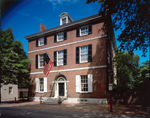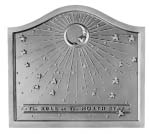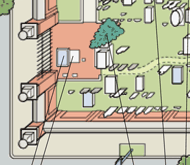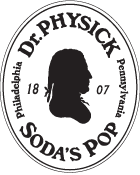

COMMODORE CONNER
Cincinnati Fourteen
Printed in the Journal of The Society of the Cincinnati,
Spring 2008, Volume 44, No. 2
The Pennsylvania Society of the Cincinnati The Pennsylvania Society of the Cincinnati is pleased to accept a generous permanent loan to its collection of portraits and artifacts in the Cincinnati Room at the Hill-Physick House in Philadelphia. The addition was made possible through the generosity of Del Conner, the great-great grandson of Commodore David Conner, whom the portrait depicts.
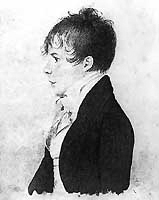
Portrait of David Conner as a youth, circa 1809 when he entered the navy as a Midshipman
Commodore Conner was a distinguished honorary member of the Pennsylvania Society who was inducted after his gallant service in the U.S. Navy during both the War of 1812 and the Mexican American War. A native of Harrisonburg, David Conner joined the navy as midshipman in 1809. During the War of 1812 he served aboard the USS Hornet, participating in the chase of the HBM Belvidera, which was the first action of the war. As captain of the prize brig Dolphin, he was captured by the HBM Hazard and was briefly detained as a prisoner of war. Upon his exchange, he retuned to the Hornet and served as third lieutenant during the capture of the HBM Peacock. Conner also served as first lieutenant during the capture of the HBM Penguin. It was during this engagement where he was seriously wounded.
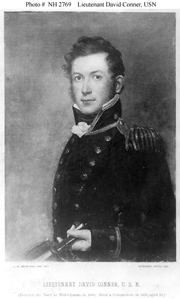
Portrait of
David Conner, U.S.N.,
by John Wesley Jarvis, 1814
For these valiant efforts Conner was awarded two medals of valor from Congress. The Commonwealth of Pennsylvania also awarded him a sword for his gallantry. The sword was presented to Conner in Independence Hall. This sword and the medals are prominently displayed in the Cincinnati Room at the Hill-Physick House in Pennsylvania, along with a painting depicting the famous engagement of the Hornet and the Penguin. The portrait of Commodore Conner serves as an important addition to the Pennsylvania Society's collection of artifacts pertaining to Commodore Conner. The portrait was done by John Wesley Jarvis in 1813 and accurately depicts Conner and the naval officer's uniform during that period.
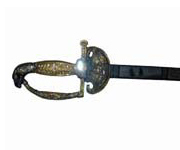
First Ceremonial Sword produced by Fletcher and Gardner, Philadelphia presented by the Governor of Pennsylvania, July 4th, 1827
After the War of 1812, Conner served as first lieutenant aboard the USS Ontario, under Captain Biddle when the United States took possession of Oregon in 1818. Conner commanded the USS John Adams in the Mediterranean in 1834. He was promoted to captain the following year, and in 1841 he was appointed navy commissioner. On November 29, 1843, Conner was promoted to commodore and commander in chief of the Home and West Indian Division. It was this appointment that led to his distinguished service during the Mexican American War. Commodore Conner immediately blockaded the Gulf Coast and gave substantial support to General Zachary Taylor. On March 9, 1847, he landed General Winfield Scott's army of twelve thousand men within site of the city and castle of Vera Cruz. It was this action that led to the surrender of the city and effectively ended the war. As a result of these successes, the Mexican government ceded a large landmass to the United States that includes present-day California, Nevada, New Mexico and Arizona. The Pennsylvania Society made Commodore Conner an honorary member after the resounding victory at Vera Cruz.
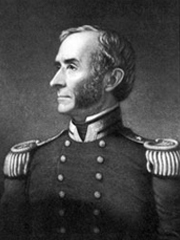
Commodore David Conner, U.S.N. 1792-1856
Commodore Conner also has a connection to the Hill-Physick House. Conner was the son-in-law of Dr. Philip Syng Physick widely regarded as the father of American surgery. The cooperation between Commodore Conner and General Scott during the Vera Cruz operation was exceptional at the time. It was rare that a naval commander and commander of land forces would cooperate so effectively. Many historians have noted this remarkable cooperation, but none have heretofore made the connection between these two heros. During the War of 1812, as a young lieutenant, Scott was severely wounded at The Battle of Lundy's Lane near Niagara Falls. It was none other than Dr. Physick that nursed Scott back to health.
The Pennsylvania Society and The Hill-Physick House are pleased to have the opportunity to display the portrait of Commodore Conner. It makes a fine addition to the collection of artifacts related to one of the Mexican American's Wars distinguished heros. Visitors to the Philadelphia area are encouraged to visit the Cincinnati Room at the Physick House just blocks away from Independence Hall.
by William Hoyt Olinger
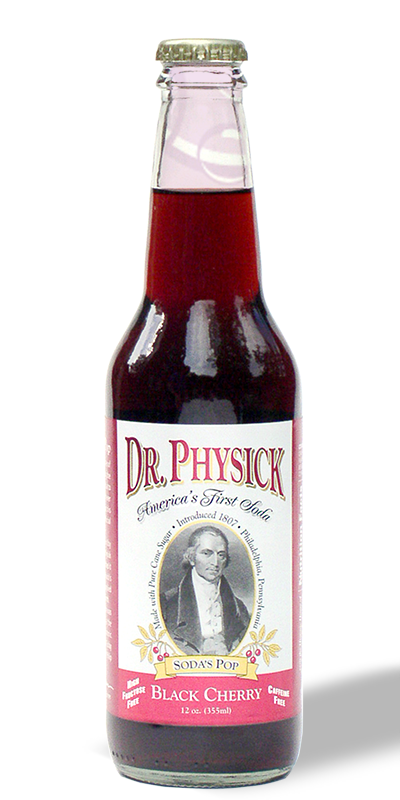

 City Tavern's Chef Walter Steib's tour of Physick House
City Tavern's Chef Walter Steib's tour of Physick House 